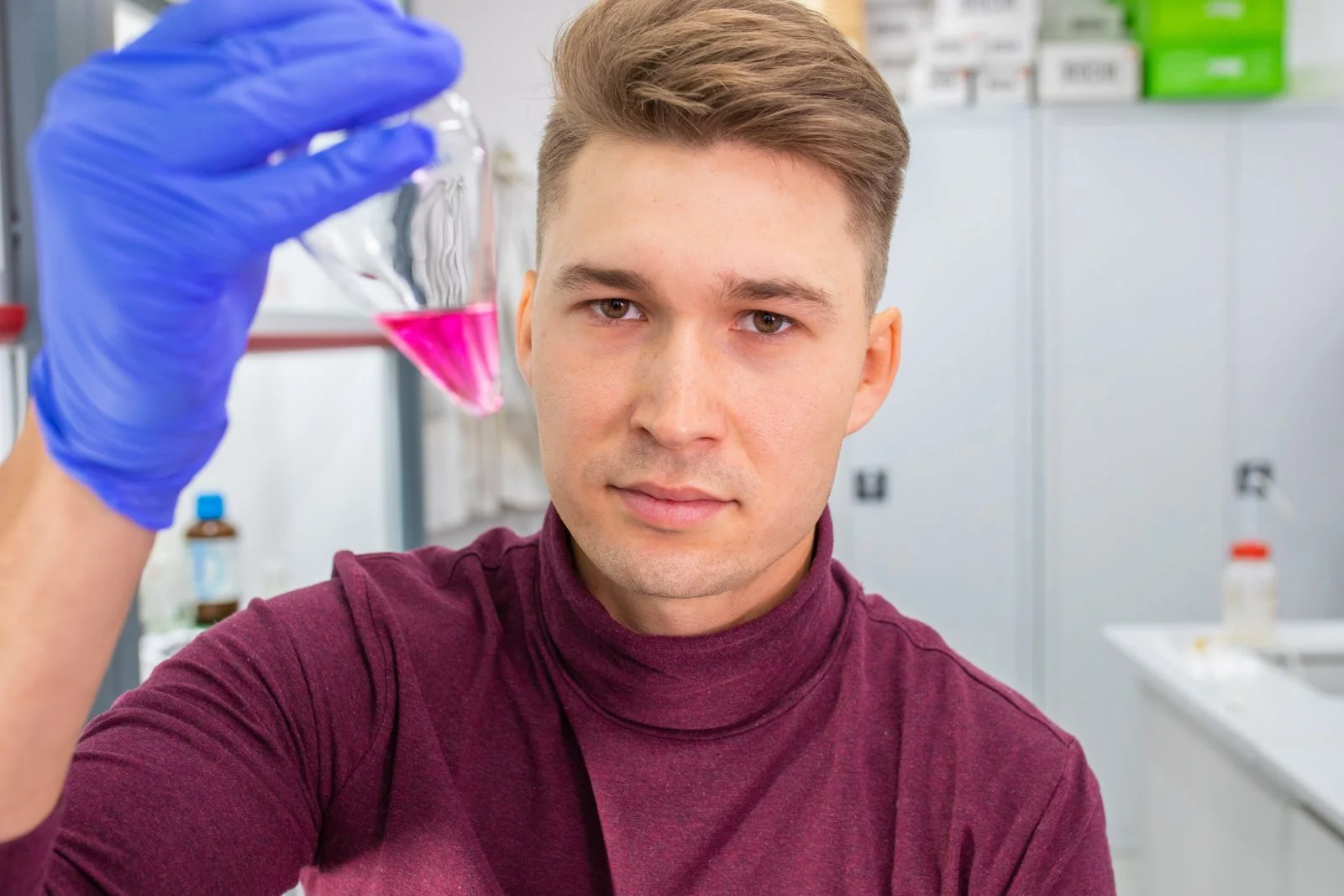
Molecular machine designer – Rafał Grzelczak
The University of Wrocław has high esteem for finalists and laureates of Olympiads, and candidates with excellent secondary school-leaving exam results, but most of all for those who wish to develop their interests and become “Young Researchers”. Meet Rafał Grzelczak.
Scientists from the University of Warsaw, from the Polish Academy of Sciences, and from the Faculty of Chemistry of the University of Wrocław, including one of our young researchers Rafał Grzelczak, have recently made great progress towards designing new molecular machines.
Rafał is in the research group of prof. Bartosz Szyszka at our University. It is this group that has recently obtained a new class of rotaxanes based upon calix[n]phyrins—hybrids of porphyrinoids and calixpyrroles. The introduction of calix[n]phyrins into the rotaxane axle created a new type of molecular motion, so-called “fluttering”, not previously described in scholarly literature.
“Rafał Grzelczak is a part of the Supramolecular Organic Chemistry Team. He managed to obtain an interesting group of rotaxanes while researching the synthesis of new molecules with chemical bonding for his dissertation”, prof. Bartosz Szyszko emphasises.
Recent research published by Grzelczak in the Angewandte Chemie journal regards the implementation of a new type of motion—“fluttering”—into the molecular machines, possible through the application of a calix[n]phyrin ring into the molecule structure. “Additionally, we showcased an interesting approach in the synthesis of mechanically interlocked porphyrinoids and expanded the knowledge on the already existing types of motion in molecular machines. In my opinion, the paper is very rich and may create possibilities for many engaging projects”, says Rafał Grzelczak.
In his doctoral research, he is working on mechanically interlocked molecules. “A mechanical bond is an entanglement of at least two chemical individuals in space, which form a unity despite not being linked through a covalent bond”, Rafał explains. “The simplest examples of objects with this property in the macroscopic world are chain links, a bracelet on one’s hand, or an earring in one’s ear. A physical nearing of such individuals enables the obtainment of tight spaces which imitate active sites of proteins. In addition, through the modifying of the entangled subunits, we are able to gain control over their motion towards each other. Such procedures turn a molecule into a molecular machine”, he adds.
The Young Researcher Grant helped Rafał Grzelczak twice.
First, during a conference in Cagliari. “I stumbled upon the ‘Young Researcher Grant’ while searching for financial resources for this international conference. Since the programme was going to cover all trip-related expenses, I sent my application letter. A few weeks later I received information that I had been granted financial support.”
And again, during a conference in Paris. The grant was high enough to enable a calm and comfortable trip. “Participating in the conferences gave me a broader perspective on supramolecular chemistry, as I obtained the essence of the work of several research groups during several days of lectures and presentations”, the young researcher says. “This makes it possible for me to search for new paths of application and development of my projects.”
“Establishing relations with PhD students working in teams I followed was crucial, it gave me the technical knowledge on how to properly perform chemical syntheses I found problematic. I also feel that participating in those conferences may help me choose the laboratory for my post-doctoral internship more advisedly. Besides, the trips had a cognitive and touristic asset”, he says.
Why did he choose the University of Wrocław? “A few people recommended it to me”, he admits. “During my university studies I attended prof. Bartosz Szyszko’s laboratory classes on organic chemistry. I happened to be invited to join his team. The subject he proposed for my thesis sounded very exciting to me. After getting my master’s degree, I decided it might be worth it to continue my research on a PhD programme.”
Plans? “Firstly, a post-doctoral internship abroad. Further career plans will be getting clarified in the next year”, he adds.
More about the programme: Young Researcher, or scholarships for the best! – Uniwersytet Wrocławski (uwr.edu.pl)
More about our young researchers: Scholarships and Young Researcher grants (IDUB) – University of Wrocław (uwr.edu.pl)
Edited by Katarzyna Górowicz-Maćkiewicz
Translated by Natalia Tkaczuk (student of English Studies at the University of Wrocław) as part of the translation practice.



